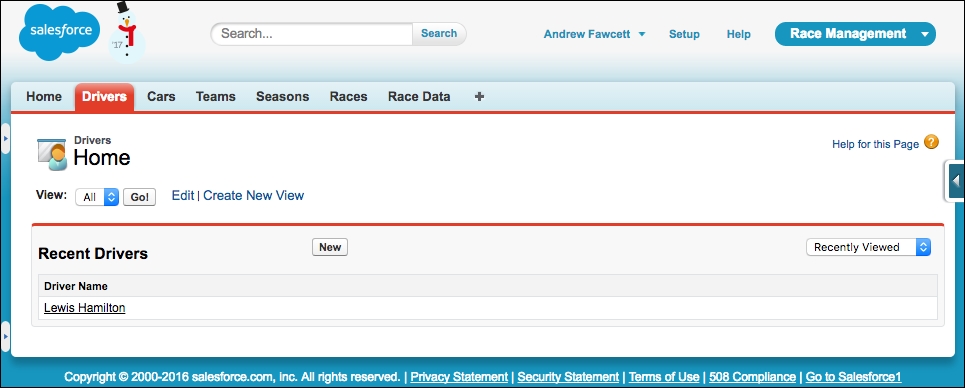Choice can be a good thing, but sometimes, the choices are not very clear, especially when new technologies emerge and overlapping with existing ones. In this chapter and the next, we will be exploring features that help you make the choice between standard UIs provided by Salesforce, or building your own custom UIs or, in fact, balancing the use of both. With the advent of the new Lightning technology from Salesforce, deciding what technology to use for a given custom UI requires some consideration.
Salesforce has historically provided Visualforce as the recommended technology for building custom UIs. To some developers, it resembles Java Server Pages or .NET Active Server Pages, and is very powerful and stable. They also provide a great number of ways to extend their standard UIs with custom UIs built with Visualforce, allowing you to make the choice at a more granular function-by-function level, depending on what works best for your particular user personas.
To further complicate things, Salesforce's standard UIs now come in different variants for users to choose from. There is the Salesforce1 application, for mobiles and now two options for desktop users. The two desktop UIs from Salesforce are now known as Salesforce Classic and Salesforce Lightning Experience.
The FormulaForce application in the Salesforce Classic standard UI is shown here:

This is how it is shown in the Salesforce Lightning Experience standard UI:

Lightning Experience (or LEX for short) brings with it an entirely new client side architecture, which departs from the server-side rendering for its predecessor (Salesforce Classic) and Visualforce provided. For backwards compatibility, Visualforce UIs can still be used within Lightning Experience, although, using Visualforce in LEX will not offer the level of extensibility or visual appeal as custom UIs built using the Lightning framework.
Tip
LEX provides much more integration points for developers to extended the standard UI, reducing the need to build an entirely new replacement page from scratch. This chapter and the next will explore in more detail the ways in which Lightning Components can be used to extended LEX features with your own, thereby reducing the development costs for you, and giving your customers even more value from the Salesforce standard UIs and customization tools.
For the first time, developers can now use the same technology and theme Salesforce have used to build their LEX based applications, known as the Lightning Framework. Salesforce has also chosen to open source their styling framework used by Lightning, which is known as the Lightning Design System (LDS). This is built into the platform and is available as a set of CSS files if you want to use it in Visualforce or externally (https://www.lightningdesignsystem.com/).
So why is Visualforce still a consideration? At the time of writing this book, the Lightning framework is taking some big steps forward in providing the same facilities and components that Visualforce already has. But it's not quite there yet; there are some gaps to be aware of.
If you're reading this having already developed a Force.com application prior to Lightning, you will still very much be very interested in leveraging Visualforce until you can migrate. In this case, you will also no doubt be interested in ways to combine both technologies, so that you can perhaps start to develop new features in Lightning framework.
In the next chapter, we will go into more detail on ways to balance both technologies. For now, and likely for the next couple of years, while adoption builds, Salesforce Classic and Lighting Experience are going to co-exist.
